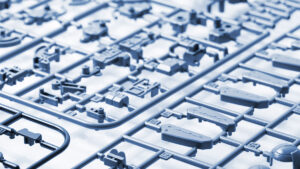Plastic products are very common in our daily lives. Cases for computers, mobile phones and electronics, daily household items, storage containers, automobile panels, furniture etc. are nearly all made of plastic. The method most often used to produce these products is a process called plastic injection. This article will address some of the key points that need to be taken into consideration during the plastic injection molding process, and what processes are required for injection molding.
What is plastic injection?
Plastic injection technology is used to manufacture a broad range of plastic products that we use daily. The principle of injection molding is to heat and melt granular plastic pellets into a flowable liquid which is then injected under high pressure into a mold. After a period of cooling down, the mold is opened and the final completed plastic product is removed.
Five plastic injection molding processes
The plastic injection molding process has five stages: plasticizing, injection, pressure holding, cooling, and removing from the mold. Because these five stages of the manufacturing process continue simultaneously under controlled automated production, products can be efficiently produced in large quantities.
1. Plasticization
The raw plastic material is melted at high temperature in the material tube of the injection molding machine. The processing temperature is carefully controlled according to the characteristics of the selected plastic material, the mold, and the product being produced.
2. Injection
A screw is used to inject the plastic material under high pressure into the mold. The shape of the mold and its design will determine processing factors such as the pressure and flow rate at which the plastic is injected into the mold. Shrinkage rate of the plastic is also considered to ensure the proper size of the final product, and to avoid deformation during cooling off.
3. Holding pressure
After the plastic raw materials has been injected into the mold, pressure is maintained on the plastic to ensure that it makes complete contact with the mold, and to avoid backflow of the plastic.
4. Cool down
The plastic is cooled at a controlled rate to ensure consistency of the item being formed.
5. Removal from mold
Finally, the mold is opened and the completed plastic product is removed.
Read more: Key Factors in Plastic Injection

